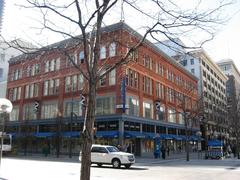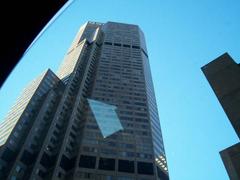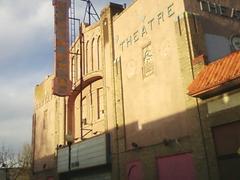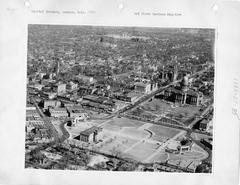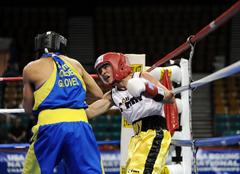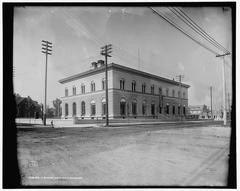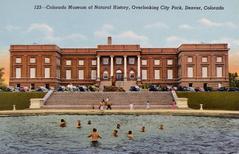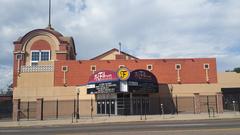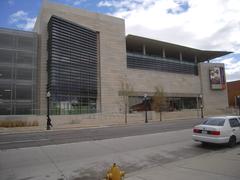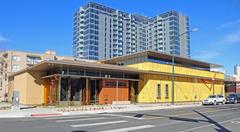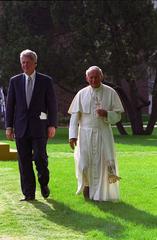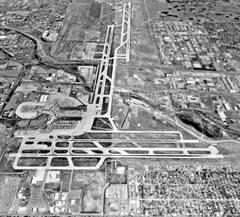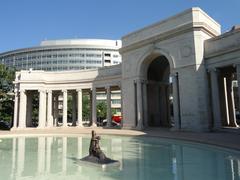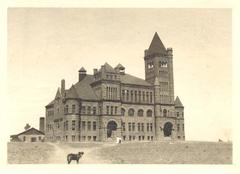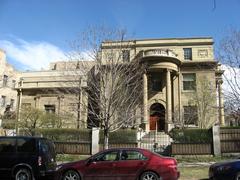Weir Gulch Park Visiting Hours, Tickets, and Denver Historical Sites Guide
Date: 14/06/2025
Introduction
Weir Gulch Park, nestled in west Denver, exemplifies the city’s transformation from engineered urban waterways to restored, vibrant green spaces. Once a natural tributary of the South Platte River, Weir Gulch was instrumental in Denver’s early settlement, supporting agriculture and industry in Colorado’s arid climate. As Denver grew, the gulch was encased in concrete and diverted underground to accommodate urban infrastructure, leading to habitat loss and disconnecting communities from their natural environment.
Recognizing these costs, Denver launched ambitious restoration projects to “daylight” buried streams, restore creek beds, and create accessible parklands. These efforts, supported by federal and municipal investment, have revitalized Weir Gulch Park into a multi-use, 8.5-acre green space with trails stretching 2.7 to 3.7 miles. Open daily from dawn to dusk with free admission, the park now features accessible paths, playgrounds, picnic areas, and restored natural habitats. It serves as a model for equitable urban renewal, particularly benefiting historically underserved neighborhoods like Sun Valley, Barnum, and Westwood.
Whether you are a history enthusiast, nature lover, or seeking a family-friendly retreat, Weir Gulch Park offers a rich blend of ecological value, recreation, and historical insight. For more details on the restoration, see the city’s official resources and news coverage (Denvergov.org; Denver Post; EPA).
Contents
- Early Settlement and Transformation of Denver’s Waterways
- The Role of Irrigation and Urban Engineering
- Environmental Degradation and Restoration Efforts
- The Weir Gulch Revitalization Project
- Visiting Weir Gulch Park: Hours, Access, and Tips
- Community Impact and Historical Significance
- Ongoing Challenges and Future Directions
- Frequently Asked Questions (FAQ)
- Conclusion
Early Settlement and Transformation of Denver’s Waterways
Weir Gulch and the South Platte River formed the backbone of early Denver, attracting settlers after the 1858 gold rush (Denvergov.org). These waterways provided vital resources for agriculture and industry. As the city expanded, urban planning shifted to prioritize infrastructure, leading to the burial or rerouting of natural waterways like Weir Gulch to support development (Denver Post).
The Role of Irrigation and Urban Engineering
The construction of the High Line Canal in 1883 further altered Denver’s hydrology, fragmenting waterways and enabling agriculture and landscaping (Denver Post). Throughout the 20th century, increased runoff and flooding led to engineering interventions—paving and piping gulches like Weir—to manage water flow, which resulted in ecological degradation and reduced neighborhood connectivity (Denvergov.org).
Environmental Degradation and Restoration Efforts
By the late 20th century, engineered waterways caused wildlife habitat loss, water quality decline, and persistent flooding. A city study estimated that more pipelines would cost taxpayers $1.4 billion (Denver Post). Recognizing these issues, Denver turned to ecological restoration, exemplified by projects like the daylighting of Westerly Creek, which improved flood control, habitat, and recreation (Denver Post).
The Weir Gulch Revitalization Project
In the late 2010s, Denver initiated a $77 million effort to remove concrete channels and restore the Weir Gulch corridor (Denver Post). The project re-exposed sections of the gulch, reshaped landscapes, and planted native vegetation to slow and filter stormwater, reduce flooding, and support wildlife. New trails and amenities improve neighborhood connectivity and recreational options (Denvergov.org).
Visiting Weir Gulch Park: Hours, Access, and Tips
Visiting Hours: Daily, dawn to dusk.
Admission: Free; no ticket required.
Accessibility: Paved and natural-surface trails accommodate all mobility levels. Accessible parking and rest areas are available.
Getting There: Free street parking near South Sheridan Boulevard; RTD bus routes serve nearby neighborhoods.
Amenities: Picnic areas, benches, restrooms at key access points, and nearby cafes and shops.
Events: Occasional guided nature walks and educational programs—check Denver Parks & Recreation for updates.
Photography: Scenic viewpoints along the gulch, especially at sunrise, sunset, and during wildflower blooms.
Dog Policy: Dogs are welcome on-leash; waste stations are provided.
Community Impact and Historical Significance
The restoration of Weir Gulch Park marks a transition in Denver’s planning philosophy, shifting from engineered solutions to ecological restoration and community engagement. The park reconnects residents to their natural heritage and addresses historical environmental justice concerns by improving access to green spaces for underserved neighborhoods (Denvergov.org).
Ongoing Challenges and Future Directions
Revitalization is ongoing, with community input shaping flood control, maintenance, and design. Denver’s commitment to daylighting waterways and investing in green infrastructure will continue to influence park development citywide (Denver Post).
Frequently Asked Questions (FAQ)
Q: What are Weir Gulch Park’s visiting hours?
A: Daily from dawn to dusk.
Q: Is admission free?
A: Yes.
Q: Are pets allowed?
A: Yes, on-leash.
Q: Is the park accessible for people with disabilities?
A: Yes, with paved trails and accessible amenities.
Q: How can I reach the park by public transit?
A: Multiple RTD bus routes serve the area.
Q: Are there guided tours or special events?
A: Occasionally; check Denver Parks & Recreation for the latest.
Park Layout, Natural Features, and Activities
Weir Gulch Park’s linear design follows the gulch as it weaves through west Denver’s neighborhoods, offering grassy slopes, mature trees, and a restored creek corridor. The park supports diverse native plants and birdlife, with interpretive signage educating visitors about ecological and historical themes (Wanderlog).
Trails and Connectivity
The Weir Gulch Trail is a paved, multi-use path spanning 2.7–3.7 miles, linking major parks like Barnum and Lakewood Gulch, and connecting to the South Platte River Trail (TrailLink). Benches and shaded rest areas are spaced along the route.
Playgrounds and Sports Facilities
Multiple playgrounds, with the main one near West 8th Avenue and Perry Street, serve families. Sports courts and fields are available near Barnum Park for basketball and soccer.
Picnicking and Gathering
Shaded picnic areas with tables and grills are scattered throughout. Open lawns are popular for gatherings, yoga, and informal sports.
Environmental Enhancements and Art
Denver has invested in creek restoration, wetlands creation, and bank stabilization. Community art projects and murals enliven underpasses and trail intersections (Denver Parks & Recreation).
Accessibility and Services
The main trail is flat and paved; parking and RTD bus service ensure access. Restrooms are available at key points during peak seasons, with water fountains at primary entrances.
Ongoing Improvements and Community Engagement
Significant federal investment is supporting continued flood mitigation, ecological restoration, and park enhancements. The Sun Valley section is undergoing channel restoration, with future phases planned for Barnum, Barnum West, and other neighborhoods (COAG). Denver emphasizes community involvement in planning, addressing flood risk and equitable development (EPA).
Visitor Tips
- Visit in spring, summer, or fall for lush vegetation and active wildlife.
- Bring water, sun protection, and comfortable shoes for trail activities.
- Check official updates for weather, trail conditions, and construction detours.
- Dogs must be leashed; waste stations are provided.
Nearby Attractions
Weir Gulch Park is linked to Barnum Park (with a recreation center and pool), Lakewood Gulch Park (home to Paco Sánchez Park), and the Sun Valley Riverside Park. The Sun Valley Historic District and surrounding neighborhoods offer cultural experiences.
Conclusion
Weir Gulch Park is a shining example of Denver’s dedication to environmental restoration, community equity, and recreational access. The park’s transformation from a buried waterway to a thriving urban oasis offers a model for sustainable urban renewal. With its scenic trails, robust amenities, and historical significance, Weir Gulch Park is a must-visit for residents and visitors alike.
For the latest updates, trail maps, and events, visit the Denver Parks & Recreation official website and consider downloading the Audiala app for interactive guides.
References
- Exploring Weir Gulch Park: History, Visiting Hours, and Denver’s Urban Waterway Restoration (Denvergov.org)
- Denver Irrigation Waterway Reengineering (Denver Post)
- Sun Valley 10-Year Summary (EPA)
- Weir Gulch Restoration Project Proposal (COAG)
- Weir Gulch Trail Information (TrailLink)
- Weir Gulch Park Overview (Wanderlog)
- Denver Parks & Recreation Official Site (Denvergov.org)
